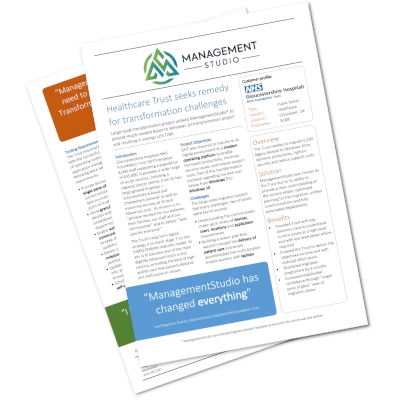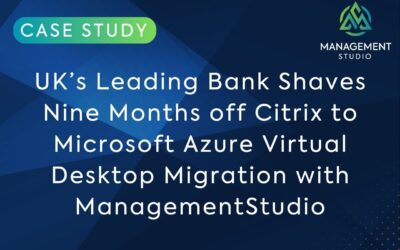One of the key areas where NHS Trusts across the UK have suffered over the past few years is with IT system interruptions impacting the ability for staff to provide the high-quality services that patients have come to expect. How can you minimise this risk going forwards?
Are your IT systems being maintained?
Keeping 1000’s of devices (life critical ones at that) up and running, maintaining them, and preparing for the upcoming Windows 11 release in a fast-moving healthcare environment is challenging and traditional, manual, methods are simply not sufficient. Disparate spreadsheets, bespoke databases, teams emailing users, manual surveys, and no single source of data, can lead to delays and be subject to human error. Using real data and automating many functions can dramatically reduce risk, save money and resources.
Compatibility
Are you computers compatible with new versions of Windows?
Logistics
How will you manage the logistics of updating your estate?
Vulnerabilities
Have you got a plan to keep your estate safe from vulnerabilities?
Resources
Do you have enough resource to implement your plan?
We all saw the impact that the WannaCry ransomware attack had across the NHS back in 2017. It is estimated to have cost the NHS £92m. It led to 80 out of the UK’s 236 trusts being affected. 603 primary care and other NHS organisations, including 595 GP practices and 19,000 cancelled appointments.
The attack led to a scurry of activities to get devices upgraded to the latest version of Windows and protected from future attacks. Some Trusts were more successful than others in doing this and even now there are some Trusts that either have not fully migrated to Windows 10 or are now struggling to keep their estates up to date with the ongoing updates that are required.
Running devices with unpatched or outdated operating systems is risky. Most of the NHS devices infected with the ransomware, were found to have been running the supported, but unpatched, Microsoft Windows 7 operating system. But keeping 1000’s of devices up to date is not an easy task. Simply turning on ‘auto-update’ is not an option either. This approach could be catastrophic and could bring life-critical devices to a halt at the busiest of times.
At ManagementStudio we see these challenges slightly differently. Instead of looking at each of these changes as a big project, we see them as a process. So, whether it is a move to Windows 10, the latest Windows 10 update or even preparation for Windows 11, it can be a seamless process. This can be carried forward into ‘business as usual,’ once the devices have been updated and then utilised to keep them up to date at a tempo that suits the Trust and based on a schedule that works for everyone.
Data is everything
ManagementStudio is an “IT transformation” toolset. It uses data that most organisations already have, to understand existing devices, applications, users, their locations, department, and contact information.
Once we have all this information, we lock in the relationship between all those data sources. By doing this, we can precisely see the impact that a single application or a device will have on the Trust and its user and start to plan the transformation with the least amount of disruption possible. We can see exactly which applications are used by which devices and users, allowing us to rationalise those applications which are not required or mapping older versions to newer versions. We can then prioritise the application testing process, whilst always communicating with users and stakeholders about the progress of their device and application migration. We can trigger, automatically, user communications as the device or application progress through its various stages until the user is showing as ‘ready,’ upon which we can then send out scheduling information so they know exactly when their device will be updated or replaced.
Avoiding Support ‘Bubbles’
We can identify certain devices as ‘VIP’ or ‘Life Critical’ thus allowing organisations to decide precisely when they should be updated and not at times that could prove highly disruptive to the Trust.
By updating at a tempo or pace that suits the Trust, you can avoid ‘support bubbles’ by updating devices to a schedule that works for everyone. This approach proved critical when helped NHS Gloucestershire Trust migrate their users to Windows 10. They had a very small team servicing 1000’s of devices and users. Using automation, they were able to schedule updates at times that avoided critical times during the working day.
Take Control of your IT changes
Keeping control of the project, seeing predictable outcomes and preparing for future change is becoming more and more challenging without the correct tools in place. ManagementStudio provides you with that framework that is required to manage change, save money, save resources and get ready for the future.

See How We’ve Helped Gloucestershire NHS
When Gloucestershire NHS Trust needed to migrate 6,500 legacy devices to Windows 10, they turned to ManagementStudio to provide a clear understanding of the current estate, optimise planning for the migration, unify communications and fully automated the deployment.
Download the case study to learn how we helped the Trust to deliver Windows 10 ahead of time.
We will only use your information to send emails regarding the case study. We never resell your details and all data is kept in line with our privacy policy.



